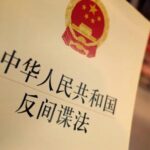“Artificial intelligence is a strategic technology leading this wave of scientific revolution and industrial transformation, with a strong ‘leading goose’ effect that drives progress across sectors.”
During a collective study session on AI development trends held by the Political Bureau of the CPC Central Committee, this vivid metaphor was used to emphasize AI’s role as a key driver of technological and industrial transformation.
Like the leading goose in a flock that breaks wind resistance for others, AI’s accelerating development is empowering manufacturing, agriculture, services, healthcare, education, and social governance, triggering comprehensive efficiency improvements and paradigm shifts.
At Benxi Iron & Steel’s Third Cold Rolling Plant in Liaoning, 0.8mm GPa-grade complex-phase steel sheets—representing the company’s premium products—move steadily through automated production lines. The workshop hums with machinery but requires minimal human intervention.
During an inspection tour earlier this year, leaders observed the plant’s intelligent control system, where production processes and real-time data were displayed clearly on large screens.
Through digital transformation, the plant achieved 65% higher labor productivity and 10% better product quality. This aligns with the strategic directive to “make smart manufacturing the main focus for industrial transformation and upgrading, fundamentally reshaping manufacturing models and enterprise structures” through deep integration of AI and industrial innovation.
“Those who seize opportunities in big data and AI will grasp the pulse of our era.”
During a landmark study session at Zhongguancun in 2013, it was emphasized: “We must urgently seize this wave of technological revolution—without delay or complacency.”
Following China’s 2017 Next-Generation AI Development Plan, AI gained higher priority in national strategies. By 2024, it was officially designated a strategic industry.
With systematic policy support and investment, China’s AI innovation ecosystem has matured. As of mid-2024, over 70% of industrial categories had adopted 5G, driving widespread digital transformation.
“Accelerating next-gen AI development is crucial for gaining global technological competitiveness,” underscored the vision to deeply integrate AI with real-world economies.
As a transformative strategic technology, China’s AI breakthroughs now enable large-scale applications across scenarios—from spaceflight (where AI-powered radars guide spacecraft docking) to industrial internet (optimizing resource allocation) and smart urban air mobility (enhancing logistics efficiency).
“Never before has technology so profoundly impacted national trajectories and people’s wellbeing,” noted a keynote at China’s major science academies, highlighting thoughtful adoption of emerging technologies.
During a recent visit to Shanghai’s AI innovation hub, leaders tested cutting-edge products like sleep-monitoring smart rings and AI-powered fitness equipment, stressing the need for “more secure, reliable products through policy support and talent development.”
The 2025 World AI Conference showcased over 100 global and China-first products, generating $7 billion in signed projects and $25 billion in intended purchases. Attendees observed: “China is no longer catching up—it’s defining original technological pathways that influence global standards.”
As nations race to lead in next-gen AI, leveraging its “leading goose” effect to reshape research paradigms and accelerate breakthroughs will be pivotal for securing future competitive advantages.



